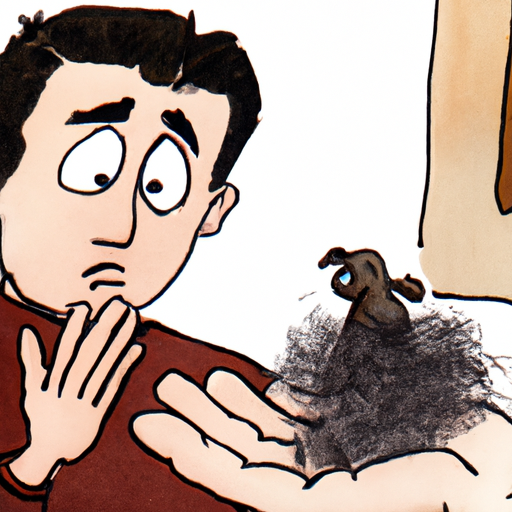If you’re a dog owner, chances are you’ve found yourself vacuuming up dog hair more frequently than you’d prefer. Most dogs shed, and while it’s a normal part of their life cycle, it can sometimes become a cause for concern. In this comprehensive guide, we’ll explore why dogs’ hair falls out, the normal shedding cycle, and when to worry about excessive shedding.
Table of Contents
- Understanding the Dog Hair Life Cycle
- Common Reasons for Dog Hair Loss
- Breeds Prone to Excessive Shedding
- When to Seek Veterinary Help
- Frequently Asked Questions
Key Takeaways
- Dog hair shedding is a normal part of a dog’s life cycle.
- Several factors contribute to hair loss, including breed, environment, diet, and health.
- Excessive shedding can be a sign of underlying health issues.
- Regular grooming can help manage normal shedding.
Understanding the Dog Hair Life Cycle
Just like human hair, dog hair goes through a life cycle. The stages include growth (anagen), rest (telogen), and shedding (exogen). The length of these stages varies depending on the breed, age, and overall health of the dog.
Common Reasons for Dog Hair Loss
Several factors can contribute to your dog’s hair falling out. Let’s explore some of the most common reasons:
-
Breed: Some breeds naturally shed more than others. For instance, Labrador Retrievers, German Shepherds, and Siberian Huskies are known for their heavy shedding. On the other hand, breeds like Poodles and Bichon Frises have hair that grows continuously, much like human hair, resulting in minimal shedding.
-
Season: Dogs typically shed more during spring and fall. This process, known as “blowing coat,” is a response to changes in daylight, preparing them for the upcoming seasons.
-
Diet: Dogs need a balanced diet to maintain a healthy coat. Deficiencies in essential nutrients like protein, vitamins, and fatty acids can lead to hair loss.
-
Stress and Anxiety: Just like humans, dogs can lose hair due to stress and anxiety. If your pet has recently undergone a significant change (like moving homes or losing a family member), it could trigger hair loss.
-
Health Issues: Certain medical conditions, like allergies, skin infections, parasites, and hormonal imbalances, can cause hair loss in dogs.
Breeds Prone to Excessive Shedding
Here’s a table with some of the breeds that shed the most and their shedding seasons:
| Breed | Shedding Season |
|---|---|
| Labrador Retriever | Year-round, heavier in spring and fall |
| German Shepherd | Year-round, heavier in spring and fall |
| Siberian Husky | Spring and fall |
| Beagle | Year-round |
| Dalmatian | Year-round |
When to Seek Veterinary Help
While regular shedding is normal, excessive hair loss or bald patches can be a sign of underlying health issues. If you notice any of the following symptoms, it’s time to seek veterinary help:
- Bald spots or thinning hair
- Dandruff or flaky skin
- Redness, bumps, or rashes on the skin
- Change in appetite or behavior
You can learn more about dog health and grooming at One Top Dog. For specific information on how diet impacts a dog’s coat, this article is a great place to start. If you’re interested in harnessing your dog’s shedding, check out these grooming tips.
Frequently Asked Questions
Q: How often should I groom my dog to reduce shedding?
A: Regular grooming can help manage shedding. For dogs with short hair, grooming once a week is usually sufficient. For long-haired breeds, you might need to groom them daily.
Q: Can diet impact my dog’s shedding?
A: Yes, diet plays a crucial role in maintaining a healthy coat. Feeding your dog a balanced diet rich in proteins, vitamins, and essential fatty acids can minimize shedding.
Q: My dog is shedding excessively. Should I be worried?
A: If your dog’s shedding seems excessive or if you notice bald patches, it’s best to consult a vet. It could be a sign of underlying health issues.
Q: What are some effective ways to manage shedding at home?
A: Regular brushing and grooming can help manage shedding. You might also want to invest in a good vacuum cleaner designed for pet hair. Feed your dog a balanced diet and ensure they’re well-hydrated.
Remember, while dog hair can be a nuisance, it’s a natural part of your pet’s life cycle. However, excessive shedding can signal health problems. Always keep an eye on your pet’s coat and consult a vet if you notice any drastic changes. A little vigilance can go a long way in ensuring your furry friend remains healthy and happy.



